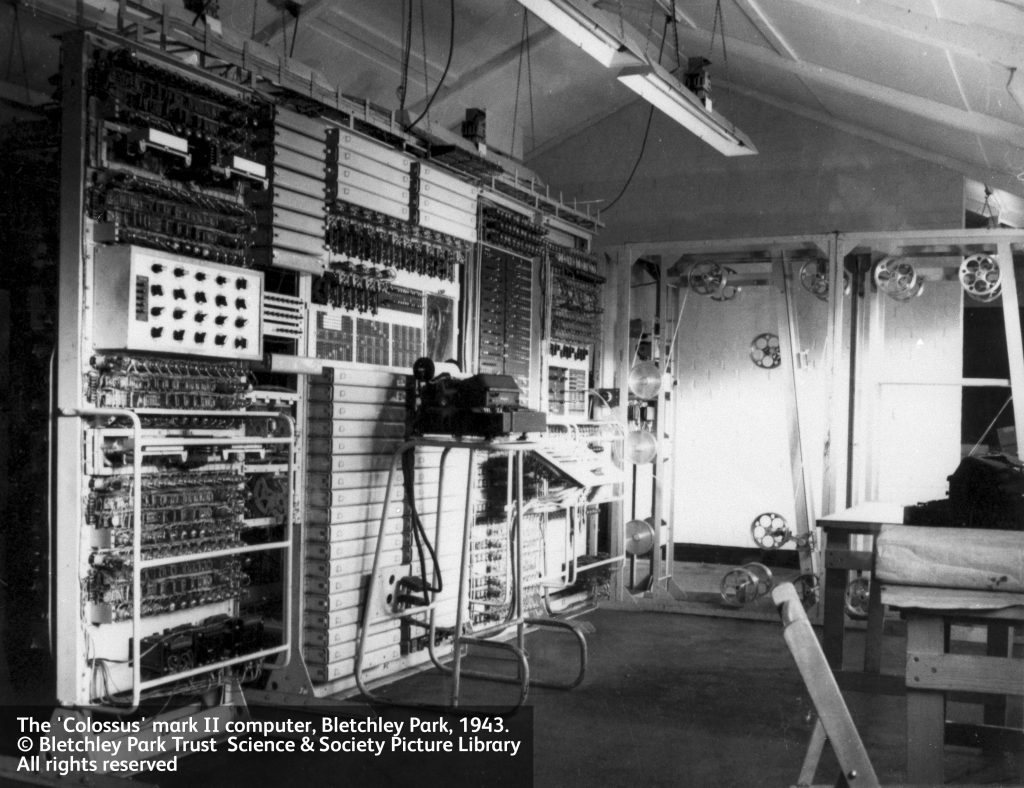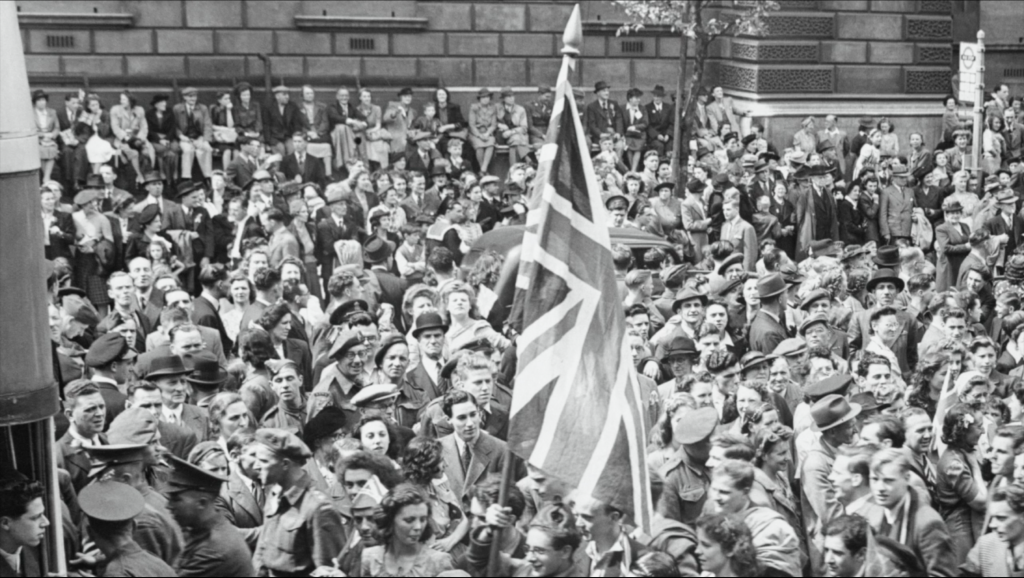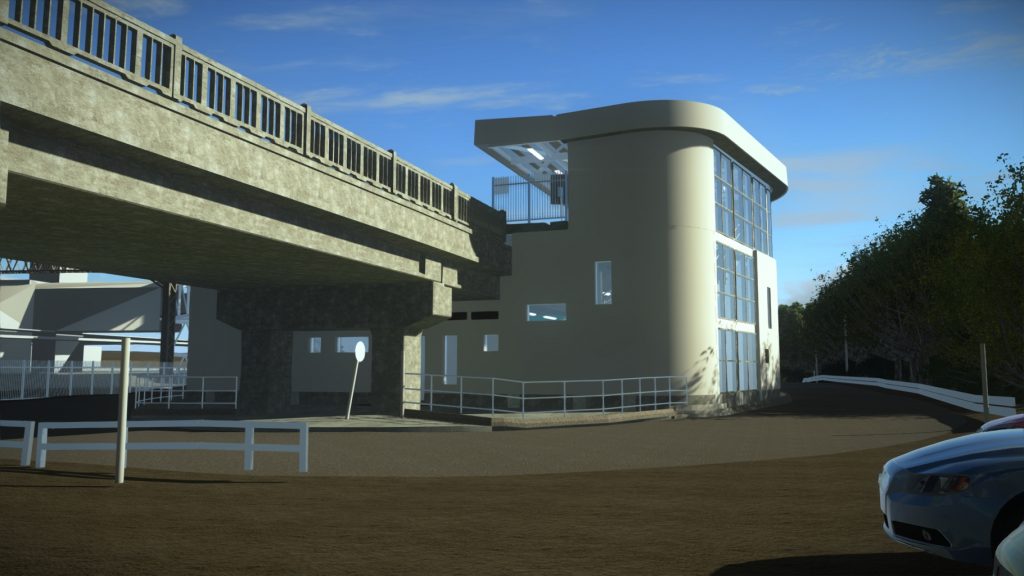Sitting immediately south-east of a Victorian gothic country mansion in Buckinghamshire is arguably one of the most important railway stations of WWII.
For many young workers assigned to the Government’sultra-secret cypher-breaking operationduring the war, Bletchley railway station was the first glimpse of a world they could not speak about for decades.
“On arrival at Bletchley [station] you will find a telephone kiosk. Ring this number and await instructions,” was one of the orders for new recruits, who on reaching the park, instantly signed the Official Secrets Act, according to Voices of the Codebreakers: Personal Accounts of the Secret Heroes of World by Michael Paterson.
It said another was: “Take the exit from the arrival platform, go to the station forecourt and report to a hut on the far right hand side marked RTO (Railway Transport Officer) and show him but DO NOT GIVE him your envelope. He will direct you.”

政府法典和蓄电池学校(GC&CS),外交部单位如此秘密,即使在最高级别的力量中也知道它存在,进入了前家庭的家Bletchley Parkat the outbreak of war in 1939. It had stables, an old tennis court and a small lake, surrounded by acres of green fields.
It also had access to telecommunications cables that ran up nearby Watling Street, train services to London Euston and a convenient stop on the so-called Varsity Line linking Oxford and Cambridge, where GC&CS recruited mathematicians including computing pioneer Alan Turing.
重要的交通联系
Tour guides at Bletchley Park often cite the rail links as one of the reasons the estate was chosen as the base for work that saved countless lives by reading secret messages – including those enciphered on Germany’s Enigma and Lorenz machines – and without which it is widely thought the war would have lasted beyond 1945.
Thomas Cheetham, a research officer at Bletchley Park Trust, said:“It wasn’t necessary for recruits to be able to arrive by train. However, the station was certainly convenient and was probably a factor in choosing the site.”
At its peak, more than 10,000 people worked at Bletchley Park and its wireless intercept stations, which supplied the encrypted messages.

Thomas said: “The railway was really important for the day-to-day commute of workers to BP… They were especially relied on by staff billeted in Wolverton, Bedford and Leighton Buzzard. In February 1944, there were 842 billeted in Wolverton, 308 in Bedford and 133 in Leighton Buzzard out of a total of 3,455 billeted civilians and 7,234 staff overall.”
画廊:Bletchley Park Transport文件日期为1944年6月28日,showing BP's efforts to get a larger workforce onto site just after D-Day.Images courtesy of Bletchley Park Trust.
D-Day.

从1943年3月,铁路was crucial in relieving the pressure on Bletchley Park’s own road transport services – GC&CS billeted staff in Bedford, thought to be the furthest commute at 18 miles from Bletchley.
1944年4月备忘录表示:“直到进一步通知,大多数新的民用进入者都必须在贝德福德纳入,直到他们可以在B / P传输服务的领域重新安排。”
托马斯说:“这只是因为铁路,而且贝德福德坯料最初保留日班工作人员,因为他们可以乘火车上班。”
He added the memo probably related to staffing related to the preparations for D-Day on 6 June 1944. He said: “The staff had expanded somewhat prior to June to meet their [Operation] Overlord commitments and priorities agreed with the US Navy codebreakers… That seems to have caused some problems for the billeting office from about February onwards, forcing them to expand billeting in Bedford, and this seems to be the conclusion of the issue, once BP had been able to source enough coaches and drivers to put on a service for the Bedford shift workers when the trains weren’t running.”
Senior staff made frequent train journeys to London for meetings and to return to Oxford or Cambridge. In Colossus: The Secrets of Bletchley Park's Code-Breaking Computers by Jack Copeland, a Bletchley Park colleague sees Max Newman, famous for his work on the Lorenz cypher, at Bletchley station.
The colleague said: “He was dressed in a shabby old Burberry raincoat and was carrying a dead hare by the hind legs. He appeared to be searching the platform for something so I went up to ask if I could help. He gave me a distressed look and said that he had lost his ticket. We searched together but were unsuccessful, and as my train came in I tried to cheer him by saying I was sure the guard would believe him. His reply was: ‘Oh no, that is not my problem – until I find my ticket I cannot remember whether I am going to Oxford or Cambridge’.
Many of the ‘rank-and-file’ staff took leave in London and sometimes made it back for early shifts by hitching a lift on the early-morning ‘milk train’, according to Thomas.
Gwen Watkins的空军卫生间在她的书中写下了莱克利克的秘密:Bletchley Park:“Block F ...离私人车道最近,从公园的后部到火车站。如果你在五分钟到四分之一的部分(带来你的周末袋子)并尽可能快地驶出你的部分,那么你就会有一个很好的机会,即从伯明翰赶上火车,这应该达到三十年但几乎总是跑了很晚。或者你可以以悠闲的方式漫步,赶上四十个到埃斯顿,这几乎总是在四点半之前进入。“

Reinstating a lost line
GC&CS left Bletchley Park after the war and The General Post Office – with which Bletchley Park had close ties during WWII – took over the site as a training facility.
现在在米尔顿凯恩斯的Bletchley Station仍然是西海岸主要线路繁忙的通勤终端,但在1960年代后期牛津和剑桥之间关闭了牛津和剑桥之间的校舍线,在1963年山毛榉报告的建议下,通过关闭铁路线来节省资金。

Today, Network Rail is preparing to reinstate the line. TheEast West Rail projectwill re-establish a rail link between Cambridge and Oxford to improve connections between East Anglia and central, southern and western England.
In February, the project took a huge step forward when the Secretary of State for Transport approved our Transport and Works Act Order application for the first rail link in more than 50 years between Oxford, Bedford, Milton Keynes and Aylesbury. This approval has given us permission to start work on the next phase ofthe project.
The line will help to create jobs, boost economic growth, encourage people out of cars and onto public transport and enable sustainable development for generations.
Read more:
People and the railway: 75 years of Brief Encounter



